Introduction to the course
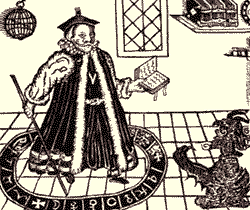
title page of Marlowe's Doctor Faustus

Course Outline for Spring 2001
THE MAIN HISTORIOGRAPHICAL TRADITIONS see below for useful review essays
The traditions outlined below should not be seen as totally separate. Authors in outlying parts of the academic world often appropriate ideas and methods without identifying them as belonging to distinct traditions, and other authors consciously combine two or more approaches. They are separated here for convenience, as an introduction to the field.
1.The liberal-rationalist tradition: there really were no actual witches, but the concept was a product of overactive ecclesiastical fears. This view was very prevalent among Protestant and later positivist writers during and after the Enlightenment, and remains prominent among historians of psychiatry. It often rests upon an exaggeratedly negative view of the role of the Inquisition in witchcraft proceedings and an overly modern-minded view of the position adopted by early modern critics of the trials.
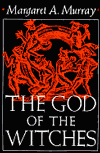
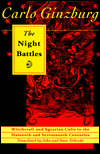 2.The
Margaret Murray tradition (romantic): European witchcraft was an ancient
fertility religion based on worship of the horned god Dianus. This
view, probably derived from Henri Michelet and German folklorists, is at
the root of modern neo-paganism, having been taken up by Gerald Gardiner
who created the modern religion of witchcraft. It is still to be
found among adherents of Wicca and other neo-pagan religions, now usually
with a female goddess figure and often combined with an essentialist form
of sentimental feminism ("women as healers", "women in touch with the earth",
etc.). The foundational texts by Murray, still held in great respect
by many neo-pagans, are available online: The
Witch-Cult in Western Europe (1921); God
of the Witches (1933). The position is typified by Z.Budapest:
"The persecution of the witches may be best explained as a desperate attempt,
on the part of the new-fangled Christian churches to establish themselves
with the peasants and townspeople, and to accumulate wealth... The budding
medical profession was also hungry to rid themselves of the herbalists,
who rivalled them. To cure was a bigger sin than to curse as a result of
this deep jealousy." In some respects, the early work of Carlo Ginzburg
on the
benandanti and his later work on the sabbat, although scholarly,
can be seen as a more sophisticated reworking of this tradition, and there
are reports of neo-pagans citing garbled versions of his work. Not
all neo-pagans are as isolated from current scholarship as they used to
be. For an example of neo-pagan revisionism, see book
reviews by Jenny Gibbons, and her article, "Recent
Developments in the Study of the Great European Witch Hunt".
A slightly condensed version, "The
Great European Witch Hunt", is available as a PDF file.
2.The
Margaret Murray tradition (romantic): European witchcraft was an ancient
fertility religion based on worship of the horned god Dianus. This
view, probably derived from Henri Michelet and German folklorists, is at
the root of modern neo-paganism, having been taken up by Gerald Gardiner
who created the modern religion of witchcraft. It is still to be
found among adherents of Wicca and other neo-pagan religions, now usually
with a female goddess figure and often combined with an essentialist form
of sentimental feminism ("women as healers", "women in touch with the earth",
etc.). The foundational texts by Murray, still held in great respect
by many neo-pagans, are available online: The
Witch-Cult in Western Europe (1921); God
of the Witches (1933). The position is typified by Z.Budapest:
"The persecution of the witches may be best explained as a desperate attempt,
on the part of the new-fangled Christian churches to establish themselves
with the peasants and townspeople, and to accumulate wealth... The budding
medical profession was also hungry to rid themselves of the herbalists,
who rivalled them. To cure was a bigger sin than to curse as a result of
this deep jealousy." In some respects, the early work of Carlo Ginzburg
on the
benandanti and his later work on the sabbat, although scholarly,
can be seen as a more sophisticated reworking of this tradition, and there
are reports of neo-pagans citing garbled versions of his work. Not
all neo-pagans are as isolated from current scholarship as they used to
be. For an example of neo-pagan revisionism, see book
reviews by Jenny Gibbons, and her article, "Recent
Developments in the Study of the Great European Witch Hunt".
A slightly condensed version, "The
Great European Witch Hunt", is available as a PDF file.
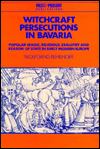
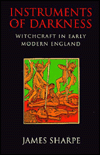 3.The
social history tradition: the social pattern of witch accusations is seen
as more informative than the study of witches, if any existed. As
with the liberal view, there is an assumption that few of the accused witches
were guilty of much more than cursing their neighbours or being the object
of suspicion for some other relatively minor reason. It is therefore
necessary to consider why they were accused. This tradition started
with straight social history (see the early works of H.C.E.Midelfort and
William Monter), and then became increasingly attached to the use of anthropological
and sociological theories (beginning with Keith Thomas and Alan Macfarlane),
although there has been criticism of the assumption that early modern Europe
can be straightforwardly compared to present-day non-industrial societies.
This is usually very much a view from the bottom upwards, concentrating
on village life and court procedures, with the role of demonological texts
remaining somewhat obscure. Sometimes this can be pedestrian but
thorough (e.g. James Sharpe and many of the German historians), at other
times it can be truly innovative, asking new questions or finding new sources
or challenging old orthodoxies.
3.The
social history tradition: the social pattern of witch accusations is seen
as more informative than the study of witches, if any existed. As
with the liberal view, there is an assumption that few of the accused witches
were guilty of much more than cursing their neighbours or being the object
of suspicion for some other relatively minor reason. It is therefore
necessary to consider why they were accused. This tradition started
with straight social history (see the early works of H.C.E.Midelfort and
William Monter), and then became increasingly attached to the use of anthropological
and sociological theories (beginning with Keith Thomas and Alan Macfarlane),
although there has been criticism of the assumption that early modern Europe
can be straightforwardly compared to present-day non-industrial societies.
This is usually very much a view from the bottom upwards, concentrating
on village life and court procedures, with the role of demonological texts
remaining somewhat obscure. Sometimes this can be pedestrian but
thorough (e.g. James Sharpe and many of the German historians), at other
times it can be truly innovative, asking new questions or finding new sources
or challenging old orthodoxies.
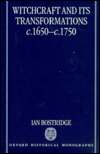
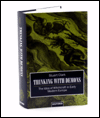 4.The
history of ideas tradition: witchcraft is a composite of concepts gradually
developed over the centuries. This view combines the study of authors
on witchcraft, assumed to have had a significant role in the development
and propagation of demonological ideas, with their theological and natural
philosophical context. Increasingly, a balanced style, adopted from
the history of science, is being adopted, along with the deployment of
linguistic and semiotic methods. Nevertheless, this remains a view
from the top downwards, and is somewhat detached from the study of actual
trials. Good examples include Gerhild Scholtz Williams, Ian Bostridge,
and above all Stuart Clark.
4.The
history of ideas tradition: witchcraft is a composite of concepts gradually
developed over the centuries. This view combines the study of authors
on witchcraft, assumed to have had a significant role in the development
and propagation of demonological ideas, with their theological and natural
philosophical context. Increasingly, a balanced style, adopted from
the history of science, is being adopted, along with the deployment of
linguistic and semiotic methods. Nevertheless, this remains a view
from the top downwards, and is somewhat detached from the study of actual
trials. Good examples include Gerhild Scholtz Williams, Ian Bostridge,
and above all Stuart Clark.
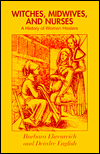
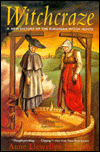
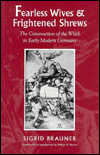 5.
Feminist traditions: the study of witchcraft and witchcraft persecution
is part of the study of women's history, especially the history of social
and sexual violence against women. This view started with a pamphlet
by Barbara Ehrenreich and Deidre English, which relied too much on older
sources such as Margaret Murray, but it has become increasingly sophisticated.
Various male historians often fail to appreciate, however, that there is
not a single feminist view on this or almost any other topic, only more
or less committed feminist approaches, with various intellectual roots.
A major problem has been the deployment of the concept of "patriarchy"
as an explanatory tool, because of its transhistorical nature which obstructs
explanation of change. Some authors (e.g. Marianne Hester and Ellen
Barstow) press a feminist interpretation of the whole history in terms
of violence against women, overestimating the numbers of executions and
suppressing the large numbers of men who were accused, whereas others (e.g.
Lyndal Roper, Diane Purkiss and Sigrid Brauner) employ relatively subtle
forms of analysis, derived from literary scholarship and/or psychoanalytic
theory. For a basic but reasonably well-informed popular summary,
see Gendercide Watch, "Case
Study: The European Witch-Hunts, c. 1450-1750, and Witch-Hunts Today".
See also page on gender and witchcraft.
5.
Feminist traditions: the study of witchcraft and witchcraft persecution
is part of the study of women's history, especially the history of social
and sexual violence against women. This view started with a pamphlet
by Barbara Ehrenreich and Deidre English, which relied too much on older
sources such as Margaret Murray, but it has become increasingly sophisticated.
Various male historians often fail to appreciate, however, that there is
not a single feminist view on this or almost any other topic, only more
or less committed feminist approaches, with various intellectual roots.
A major problem has been the deployment of the concept of "patriarchy"
as an explanatory tool, because of its transhistorical nature which obstructs
explanation of change. Some authors (e.g. Marianne Hester and Ellen
Barstow) press a feminist interpretation of the whole history in terms
of violence against women, overestimating the numbers of executions and
suppressing the large numbers of men who were accused, whereas others (e.g.
Lyndal Roper, Diane Purkiss and Sigrid Brauner) employ relatively subtle
forms of analysis, derived from literary scholarship and/or psychoanalytic
theory. For a basic but reasonably well-informed popular summary,
see Gendercide Watch, "Case
Study: The European Witch-Hunts, c. 1450-1750, and Witch-Hunts Today".
See also page on gender and witchcraft.
All of these traditions share a common though not universal
failing, a tendency to base generalizations about all witchcraft or demonology
on local examples and to suppress or distort counter-examples. The
subject arouses strong feelings, and a desire to find simple solutions
which explain everything. The simplest solutions of all tend to be
reductionist analyses wherein everything is "explained" in terms of ergot
poisoning, or the suppression of birth control, or panics about syphilis,
or mass hysteria. This usually involves gross distortions of the
historical record.
Useful reviews of recent work:
Garthine Walker, "Witchcraft
and history",
Women's History 7 (1998) [PDF
file]
Alison Rowlands, "Telling
Witchcraft Stories: New Perspectives on Witchcraft and Witches in the Early
Modern Period", Gender & History, 10 (1998) 294-302
[PDF file]